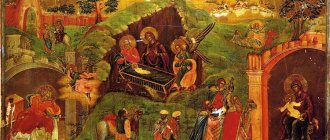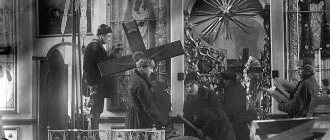On February 6, 1918, the Bolshevik government adopted a decree introducing the Gregorian calendar in the country.
Over the centuries-old history of Russia, the calendar and chronology system have changed more than once. But only once did the country, which was undergoing its largest and most brutal transformation, from the Russian Empire to Soviet Russia, wake up, having lost thirteen days of its life. This happened on the night of February 14, 1918 - the first of the days that Soviet citizens had to live according to the new Gregorian calendar. The decision to introduce it on the territory of the RSFSR was made at a meeting of the Council of People's Commissars on February 6 (January 24, old style) 1918, four days after the church, which continued to live according to the Julian calendar, was also separated from the state by decree.
We change the year, but not the calendar
The twelve-month lunar-solar calendar, which was used in the territory of Ancient Rus', began the year in spring, with the first field work. This rule was preserved even when the Julian calendar, named after Emperor Julius Caesar, who introduced it by decree in 45 BC, reached the ancient Russian state along with Christianity. But the chronology in the calendar, borrowed by the Russians from the Byzantines, remained “Greek” and was carried out from the “day of creation of the world,” which was determined in 5508 BC. In 7000 from the creation of the world (1492 AD), the Orthodox Church changed the start date of the year, moving it to September 1. This decision was not accidental: on this day the year began according to the Byzantine, that is, church calendar. And more than two hundred years later, on December 16, 7208 from the creation of the world (1699 from the Nativity of Christ; rules for calculating compliance, see Table 1), the future Emperor Peter I, by his decree, carried out the first serious civil reform of the calendar in Russia.
Portrait of Tsar Peter Alekseevich in 1698 by the German artist Gottfried Kneller
Source: livejournal.com
From now on, the Tsar ordered that the new year begin not from September 1, and certainly not from March 1, but from January 1, and at the same time replaced the chronology from the creation of the world with the chronology from the Nativity of Christ. So in 1669, Peter’s Russia managed to celebrate the New Year twice - according to the pre-reform calendar and according to the new calendar. The reason for such a reform was obvious: the reformer tsar sought to bring his empire as close as possible to Western European countries. But, changing the chronology and the start date of the year, Peter I did not dare to change the Julian calendar to the Gregorian calendar, which was increasingly spreading in Western Europe. True, it should be noted that by that time many countries with which Russia most actively interacted were still living according to the old style, including Great Britain and Sweden (Holland, from which Tsar Peter Alekseevich borrowed so much, switched to the new style only in the summer of 1700 ). In addition, the Orthodox Church lived according to the Julian calendar, playing a colossal role in Russian life, and the tsar-reformer also did not seek to enter into conflict with it on a not so important issue.
Failed reforms
By the beginning of the 19th century, life according to the “old style” began to cause noticeable inconvenience to many subjects of the Russian Empire, primarily to those who, due to duty or personal reasons, were forced to regularly interact with Western European partners. In 1830, the St. Petersburg Academy of Sciences made a proposal to switch to the Gregorian calendar, but this proposal received a negative assessment from the then Minister of Public Education, Prince Karl Lieven. Emperor Nicholas I supported him, and the project was rejected. Three decades later, in 1864, the German astronomer Johann Mädler, who then served as a professor at the University of Dorpat in the Baltics, proposed that the Russian government carry out a calendar reform without changing the chronology itself, but by adjusting the calendar based on his extremely accurate assessment of the year. Professor Medler proposed changing the cycle of three ordinary years and one leap year to a cycle of 128 years, in which there were 31 leap years for 97 ordinary years. The project was rejected by both secular and ecclesiastical authorities, twice: the second time, the Medler calendar was proposed to be introduced in 1899 by a commission organized at the initiative of Dmitry Mendeleev at the Russian Astronomical Society, but this initiative also failed.
Minister of Public Education of the Russian Empire, General of the Infantry, His Serene Highness Prince Karl Lieven
Source: liveinternet.ru
Nevertheless, inconveniences in using the calendar, which did not coincide with the pan-European calendar, accumulated, and the Russian government had to take local measures to overcome them. In particular, even before the First World War, the Gregorian calendar was used for astronomical and meteorological observations, was adopted in the military and commercial fleet, and was used in various situations by the ministries of foreign affairs, finance, communications and internal affairs. It was especially inconvenient for historians: the difference between the calendars accumulated gradually, and dates had to be translated with extreme caution (see Table 2). But for the majority of the Russian population, the discrepancy between the Julian and Gregorian calendars remained invisible. Life in the Russian outback was still largely focused on the church schedule of the year, to which the calendar in force in the country was fully consistent. In order to break this connection and force Russian subjects to stop calculating the year according to the Orthodox calendar, it took the October Revolution with its desire to “destroy the entire old world to the ground.”
The Gregorian “time machine” or how ten days disappeared at once
Anna Alyabyeva, February 24, 2022, 20:26 — REGNUM More than 400 years ago, on February 24, 1582, Pope Gregory XIII , with his bull Inter gravissimas (translated from Latin, “Among the most important...”) announced the reform of chronology and the transition to a new calendar. It is still used today by most countries in the world. The Pope ensured his memory for centuries by giving him his name - “Gregorian”.
Gregory XIII. Engraving
Before this, Europe lived according to the “Julian” calendar, which was introduced by the Roman emperor on January 1, 45 AD. e. He was the first to establish a year of 365 days, with one day added every four years. In the first centuries, the inaccuracies of the Julian calendar were little noticeable, but by the 16th century, the See of St. Peter had problems determining the most important church dates - the lag was already ten days and the day of the vernal equinox, by which the date of Easter was determined, shifted from March 21 to March 11 .
Therefore, the main initiator of the reform was the Roman Catholic Church. The Church was interested in the new calendar providing an accurate definition of the day of the main Christian holiday - Easter.
Titian. Pius IV
There were numerous people interested and their attempts to bring the calendar in line with real time. For example, Pope Paul II in the second half of the 15th century managed to establish the interval between anniversary years at 25 years. At one time, Alexander VI Borgia , Paul III and Pius IV, predecessors of Gregory XIII on the papal throne in the Vatican, took up the solution to the problem. But no one succeeded in carrying out a large-scale chronology reform.
In 1572, Gregory XIII decided to establish the “Commission for the Reform of the Calendar.” The commission's work ended in 1580.
Among Gregory XIII's contemporaries were such personalities as Christopher Clavius and Luigi Lilio . They were well versed in both astronomy and mathematics. Together they managed to develop exactly the algorithm that was recorded by the papal bull Inter gravissimas and which is used to this day.
The algorithm included two important innovations. Firstly, from the moment the new calendar came into force (October 4, 1582), ten days were added to the current date. And secondly, a new method for determining a leap year was introduced - the actual annual duration was now set at 365.2425 days, and not 365.25 days as in the Julian calendar. The solution was found to exclude leap years whose numbers are divisible by 100, and leave years with numbers divisible by 400 as leap years.
Introduction of the Gregorian calendar. Bas-relief on the tomb of Pope Gregory XIII in St. Peter's Basilica in Rome
Camillo Rusconi
And on February 24, a papal bull was issued, which began: “Inter gravissimas Pastoralis officii Nostri curas...”, which translated means “Among the most serious duties of our pastoral service...”. She went down in history because of the first two words.
Catholic countries immediately followed the papal call and in the same year (1582) Spain, Italy, the Polish-Lithuanian Commonwealth, France and Portugal switched to the Gregorian calendar. The following year (1583), Protestant Europe began to join them. By the end of 1583, Holland, Belgium, Bavaria, Salzburg, Regensburg, part of Austria, etc. switched to the new calendar. There were some oddities. Some sources say that in Belgium and Holland January 1, 1583 came immediately after December 21, 1582 and that year people were left without Christmas.
Pope Gregory XIII also sent a message to Patriarch Jeremiah II , in which he proposed using the new calendar in the Orthodox Church. But at the Council of Constantinople the proposal was rejected. Orthodox countries lived according to the Julian calendar for a long time: for example, Russia until 1918, Serbia until 1919, Greece until 1924.
Fragment of the Paschal Table “From the creation of all creation and the first created man Adam. years 7387-7401 from Adama or 1879-1893 from the Nativity of Christ 2
In 1830, the St. Petersburg Academy of Sciences nevertheless declared the need to adopt the Gregorian calendar, but received a refusal from the Minister of Public Education, Prince Karl Lieven . He considered the transition to a new chronology as “untimely”, “unproper”, and which could lead to “unwanted unrest” and “confusion of minds”. Emperor Nicholas I agreed with the minister’s arguments, and the calendar reform was postponed indefinitely.
And the prince’s fears were not without common sense. For example, when the Polish king Stefan Batory introduced a new calendar in Riga, local merchants rebelled. According to them, the ten-day shift disrupted their delivery deadlines and resulted in significant losses. The rioters destroyed the church and killed several municipal employees. It was possible to cope with the unrest only in the summer of 1589. In addition, the transition of countries to the new calendar at different times also led to factual errors. It is known that Miguel de Cervantes and William Shakespeare died on April 23, 1616. In reality, the events occurred ten days apart. The reason is that in Catholic Spain the new style has been in effect since its introduction by the Pope, and in Great Britain since 1752.
The introduction of the new calendar also had financial consequences for tax collectors. And in 1753, bankers refused to pay taxes. They waited the required 11 days after the usual end date for training camps - March 25.
Counting with your knuckles. Tubercle - 31 days, depression - 30 days
Andrey Pertsev 1967
As for the introduction of the Gregorian calendar in Russia, after Nicholas I accepted the arguments of Prince Lieven, this issue was returned to only in 1864 - the scientist Johann Heinrich von Medler that year came up with an article “On the reform of the calendar.”
According to him, “our current calendar is like a clock that is not only constantly late, but also goes wrong.” He proposed introducing a corrective scheme under which one day would be eliminated every 128 years. But even then the calendar reform was not accepted. Despite the fact that in 1899, under the Russian Astronomical Society, a commission was created from various scientific institutions, departments and ministries, which still proposed introducing in Russia not the Gregorian, but a more accurate calendar based on Medler’s project.
Only after the revolution did the solution to the “problem” of calendar reform in Russia move forward—the issue was raised at one of the first meetings of the Council of People’s Commissars in 1917. The decree “On the introduction of the Western European calendar in the Russian Republic” was adopted at the beginning of 1918 and signed by Vladimir Lenin .
“In order to establish in Russia the same calculation of time as almost all cultural nations, the Council of People’s Commissars decides to introduce a new calendar into civil use after the month of January of this year,” the decree said.
Tsar grad
Tsargrad.tv
The interesting thing is that by that time the difference between the old and new styles was already 13 days. Therefore, the decree ordered that after January 31, 1918, not the first, but February 14, and until July 1, 1918, after the number of each day according to the new style, put the old number in brackets. The Russian Orthodox Church remained with the old calendar.
At its core, the Gregorian calendar is a time calculation system that is based on the cyclic revolution of the Earth around the Sun, the length of the year is 365.2425 days, and contains 97 leap years per 400 years.
So, today is February 24th. It is the 55th day of the year in the Gregorian calendar. There are 310 days left until the end of the year (311 days in leap years).
Transition gradual or instantaneous
For the first time, the issue of switching from the Julian to the Gregorian calendar was brought up at a meeting of the Council of People's Commissars on November 16 (29 according to the current style) 1917 - just three weeks after the October Revolution. It was decided to postpone the issue until real projects for such a transition were proposed, which obviously required significant efforts. The Council of People's Commissars returned to the topic of a new calendar for the second time two months later, on January 23 (February 5, according to the present day), 1918, when it was presented with two proposals on how to introduce the Gregorian calendar in Soviet Russia. One of them, developed by the People's Commissariat of Public Education, assumed a gradual transition over 13 years, in which each new year the difference between the calendars would be reduced by one day. The second project, which was supported by Assistant People's Commissar for Foreign Affairs Georgy Chicherin, envisaged an immediate transition, which in one day would equalize the dates inside and outside Russia.
Chairman of the Council of People's Commissars Vladimir Lenin, 1918
Source: it.rbth.com
The Chairman of the Council of People's Commissars, Vladimir Lenin, warmly supported just such an “urgent” option. On the one hand, it made it possible to immediately eliminate discrepancies in dates, which was important from the point of view of the unity of the world proletariat and the export of the revolution. On the other hand, such a transition dealt another significant blow to the positions of the Russian Orthodox Church, already separated from the state (the decree on this came into force on that very day), and made it possible to quickly break the connection between it and the majority of the population of Russia, which was one one of the main tasks of the Bolsheviks. The next day, February 6, the decree on the transition to the Gregorian calendar was finally adopted at a meeting of the Council of People's Commissars. Two days later, it was signed by the Chairman of the Council of People's Commissars, Lenin, and the next day, February 9 (January 27, O.S.), 1918, the document was published and came into force.
This day in history: 1918 - Russia switched to the Gregorian calendar
On February 14, 1918, a transition from the Julian to the Gregorian calendar took place in Soviet Russia. According to the innovation, in order to bring the chronology into line with Western European ones, an amendment of 13 days was introduced into the calendar. The Gregorian calendar was introduced to Catholic Europe in 1582 as part of the reform of Pope Gregory XIII. The Julian calendar, which was in force before this, no longer met the requirements of the church, since it did not allow correctly calculating the date of the main church holiday - Easter.
Many believe that it was the Bolsheviks who came up with the idea of changing the chronology in Russia from the Julian to the Gregorian calendars. This is not true at all. Yes, it was under Soviet power that the Gregorian calendar was introduced, but proposals to bring the chronology in line with the Western European calendar were received by the tsarist government from the middle of the 19th century.
In 1830, the St. Petersburg Academy of Sciences came up with a proposal to introduce a new style in Russia. Prince K. A. Lieven, who was the Minister of Public Education at that time, reacted negatively to this and in his report to Tsar Nicholas I presented the calendar reform as an “untimely, undue” matter. which may produce undesirable disturbances and confusion of minds.” He pointed out that “the benefits from changing the calendar are very unimportant, almost negligible, but the inconveniences and difficulties are inevitable and great.” After receiving such a “report,” the tsar wrote on it: “Prince Lieven’s comments are completely fair.”
In 1899, a commission was created under the Russian Astronomical Society consisting of representatives of many scientific institutions, departments and ministries. She proposed introducing in Russia not the Gregorian calendar, but a more accurate one, based on the project of I. G. Medler. Despite the extremely active role of the great Russian scientist D.I. Mendeleev in this commission, the reform again did not take place due to the opposition of the tsarist government and the church. In an effort to paralyze the activity of the commission, the “imperial” Academy of Sciences urgently created its own calendar commission on the basis of the highest resolution, which stated that the new commission at the Academy of Sciences in its activities would “take into account the considerations of the former Minister of Public Education, Prince Lieven, on the issue of introducing Russia of the Gregorian style". These “considerations” are already known to us and boiled down to an explicit ban on calendar reform. The “academic” commission also received the opinion of the Holy Synod, whose Chief Prosecutor Pobedonostsev said that he considered the introduction of the new calendar untimely.
The issue of calendar reform in Russia was finally resolved only after the Great October Socialist Revolution. Already on November 16, 1917, this issue was raised for discussion by the Soviet government, and on January 24, 1918, the Council of People's Commissars adopted the “Decree on the introduction of the Western European calendar in the Russian Republic.” This decree was signed by V.I. Lenin and published on January 25, 1918. It began with the words: “In order to establish in Russia the same calculation of time as almost all cultural nations, the Council of People’s Commissars decides to introduce a new calendar into civil use after the month of January of this year.”
Since by this time the difference between the old and new styles was 13 days, the decree ordered that after January 31, 1918, not February 1, but February 14. The same decree prescribed, until July 1, 1918, after the date of each day according to the new style, to write in brackets the number according to the old style: February 14 (1), February 15 (2), etc. It is this sharp transition that explains the fact that From February 1 to February 13, not a single event occurred in the country - no one was born, no one was baptized, no one got married, no one died. It’s simple: these days simply aren’t on the Russian calendar.










